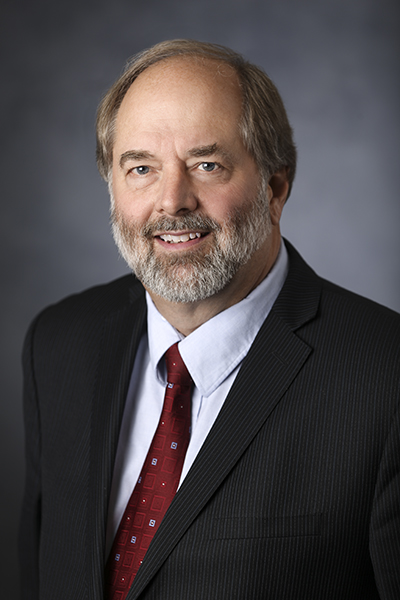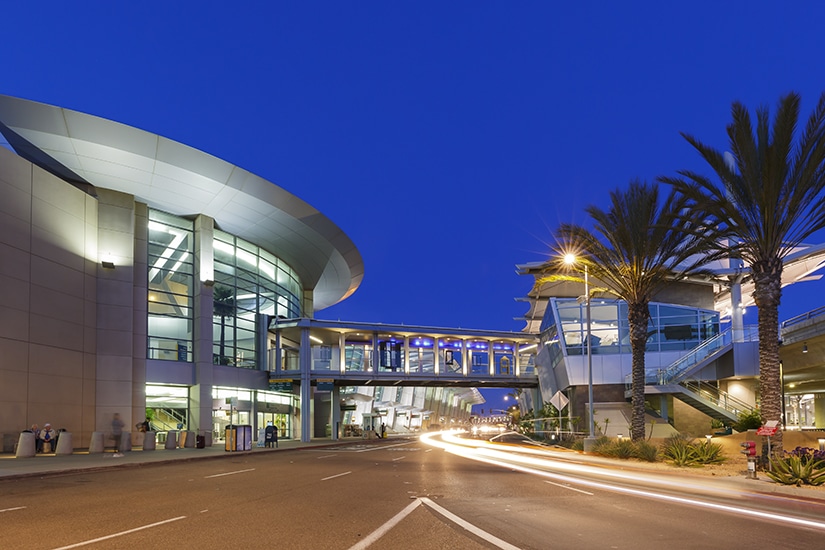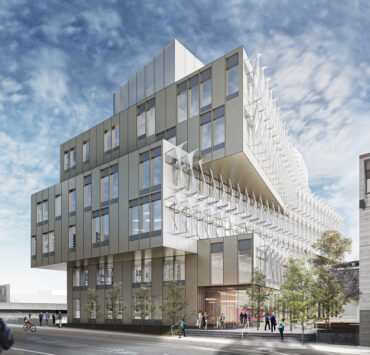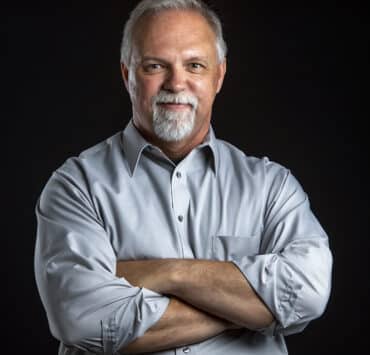|
Getting your Trinity Audio player ready...
|
Dennis Probst loves the sweet smell of jet fuel in the morning. As the vice president of development for the San Diego County Regional Airport Authority, the self-professed “airport junkie” finds airports to be “really interesting places,” he says. “I always describe the operations at an airport as a very fine ballet. As long as everybody does what they’re supposed to do, the place just hums along. If someone steps out of bounds, it can get really bad in a hurry.”

Probst jokingly calls himself an “accidental airport guy.” He had no grand plan in college, he says, and certainly “had no idea what I was getting myself into” when he decided to transition from his career path as a civil engineer to architect.
Probst grew up “a traditional 1950s kid” in southwestern Minnesota and northwest Iowa. His father ran a grocery store and his mom “was a mom,” he says. He liked to build things with erector sets and Lincoln Logs. On his grandparents’ farm, he was enraptured when things were being built. “I got to climb around on stuff,” he recalls with a laugh. “It was a great way to grow up.”
He studied civil engineering at South Dakota State University and worked a couple of summers for a city engineering department. “But I wanted to build,” he says. “I needed to be an architect.” He migrated to Iowa State University where he ultimately earned his master’s in architecture. At a Chicago firm, he discovered that his strongest skills were in project management. In the early 1980s, he went to work for a Minneapolis firm, where, again, he migrated into project management, and when the firm was looking for someone to assist with a parking facility project at the Minneapolis airport, he was tapped on the shoulder.
Among architects, parking facilities are not considered “the pinnacle,” but for Probst, the airport was love at first site. “Because of the nature of the project,” he says, “I was there at all times of the day and night. I got a chance to experience what goes on there literally 24 hours a day. I was fascinated.”
Over the next decade, Probst maintained close tabs with the airport and nurtured his relationships with the staff. When an opportunity at Minneapolis-St. Paul International Airport opened, he took it. “They were just beginning design work on what ended up being about $3 billion in improvements,” he says. “It was a challenging time, but it was so energizing to be a part of it.”

Probst went on to serve as the chief operating officer of the Metropolitan Airports Commission, which owns and operates the Minneapolis-St. Paul International Airport and six smaller general aviation airports within the twin cities area.
During his tenure there, Probst oversaw the completion of a new terminal, a light-rail tunnel and station, adjacent roadways and trams at Terminal 1, and the addition of 17 mainline jet gates and 30 regional gates. He and his team completed these projects two years ahead of the 10-year schedule.
Ambitious plans to similarly transform the San Diego International Airport (SDIA) brought Probst to his current position. “It’s great to be a part of this,” he says. “I’m a doer, I want to get things done. I’m impatient; that doesn’t sit well with people all the time.”
Probst was hired at SDIA in 2017 and is playing an integral role in its development. More than $3 billion worth of projects are already underway, most notably the airport’s Terminal 1 replacement project, and also a new hydrant fueling system, a 5,000-car parking facility, a connection to the regional transit system, and an on-airport roadway that will relieve traffic congestion on Harbor Drive, the main artery into downtown San Diego.
“San Diego County Regional Airport Authority’s launch of the Terminal 1 replacement project further advances SDIA’s journey toward a comprehensive transformation of the airport, and Denny is the right pilot for this journey,” says Michael G. Gasparro PE, aviation PM/CM practice lead at AECOM. “With degrees in both architecture and civil engineering, he brings a steady hand to the Authority, and his leadership will enable the Authority to bring this project home on time for the San Diego County Region. AECOM is pleased to be a part of his team.”
“I always describe the operations at an airport as a very fine ballet. As long as everybody does what they’re supposed to do, the place just hums along.”
Coming from the Minneapolis airport to San Diego’s, Probst is keenly aware that every airport has its own personality and culture. Probst is fond of quoting an old industry saying: “If you’ve seen one airport, you’ve seen one airport.” Take the Minneapolis-St. Paul International Airport: 3,400 acres, 4 runways, 2 terminals, 131 gates. It’s America’s seventeenth busiest airport for passengers. Compare this to the San Diego International Airport: 661 acres, 1 runway, 2 terminals, 51 gates. It’s the third-busiest airport in California and the busiest single-runway commercial service airport in the US.
“We are literally transforming SDIA probably to its final configuration because we have such a tight site,” Probst says. “It’s not a nice rectangle shape; it’s shaped like an arrowhead. Everything we do is hard because we are so space-constrained.”
But the challenges, Probst says, are what he loves best about his job. “When I leave the office at night, I think I know what I’m going to do the next day, and I rarely end up doing it. Things change, you react, and you figure out how to get back on track and move on to the next thing. I love that.”
As the vice president of development, Probst’s division oversees all development and construction, compliance, noise litigation, and other environmental issues, as well as design construction and implementation. With the San Diego airport serving as a coastal resource, additional environmental regulations need to be met, especially with a project as large as the new terminal replacement.
One of his major accomplishments thus far, he says, is getting through the rigorous California Environmental Quality Act process. “We had to go through it twice,” he says, “but we’ve set a new standard for San Diego on how to collaborate with public partners.”
Assuming other state and federal environmental entitlements fall into place, he hopes to break ground by the end of 2021. That’s another difference between San Diego and Minneapolis, he jokes: not a lot of groundbreaking happens in Minneapolis in wintry November.
Construction on the first phase (nineteen gates) is scheduled for completion in 2025 and development on the last eleven gates following over the course of 24 months. In addition to the parking facility and new fueling system, Probst’s team also has plans for a new taxiway that will make turning airplanes around easier. Other projects recently completed during Probst’s tenure include a new International Arrivals facility, a new belly cargo facility, and stormwater-capture cisterns.
“Not many people get the chance to be involved in these kinds of projects more than once in their lifetime,” he says. “Now, I feel like I have two home airports.”


